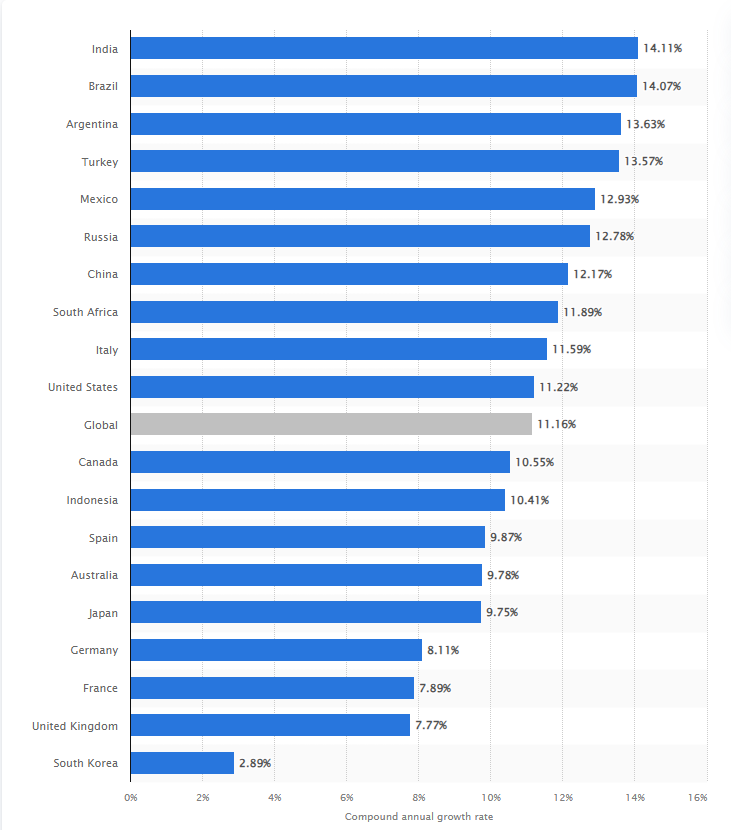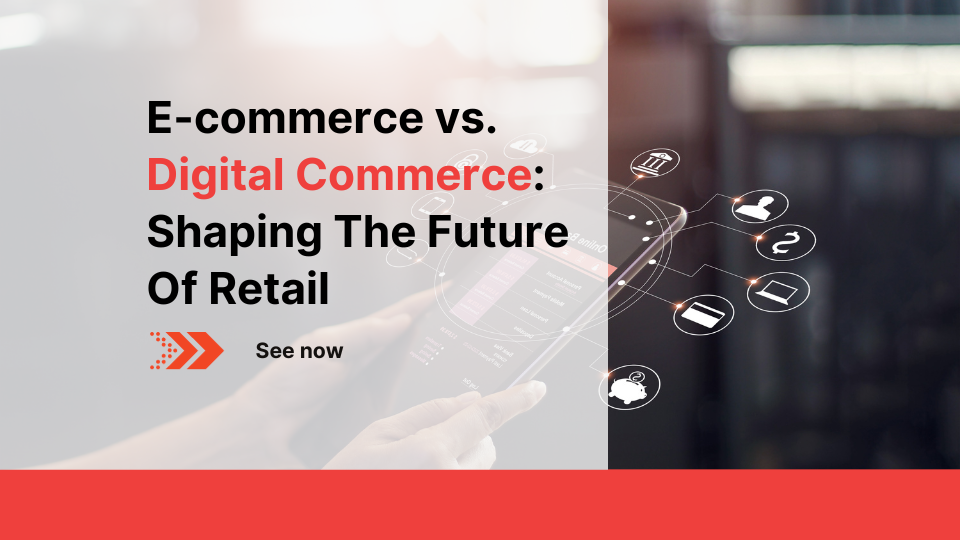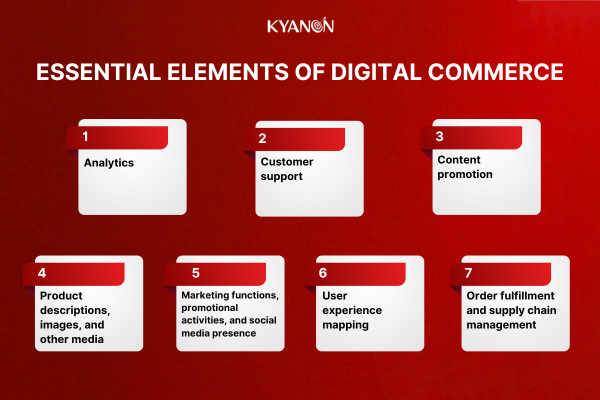What is the difference between E-commerce vs. Digital Commerce?
According to recent industry calculations from Statista, India will rank first among 20 countries worldwide in retail e-commerce development between 2023 and 2027, with a compound annual growth rate of 14.1 percent. The Indian e-commerce market is currently valued at 63.17 billion U.S. dollars. Argentina and Brazil are also among the fastest-growing e-commerce markets globally, with a CAGR of over 13.6 percent. The global retail e-commerce CAGR was estimated at 11.16 percent during the same period.

Retail e-commerce sales compound annual growth rate (CAGR) from 2023 to 2027, by country
(Source: Statista)
In the current landscape, merely launching an e-commerce website doesn’t suffice as a comprehensive digital commerce strategy. While e-commerce is poised to surpass traditional offline shopping in consumer preference, achieving success in the digital realm involves more than just selling products online.
Meeting the expectations of contemporary consumers, which include empathetic, personalized, and digital-first engagement, goes beyond the fundamentals of e-commerce. This is where digital commerce takes the lead, and traditional e-commerce steps into a secondary role.
1. What is Digital Commerce?
According to Gartner, Digital commerce enables customers to purchase goods and services through an interactive and self-service experience. It includes the people, processes and technologies to execute the offering of development content, analytics, promotion, pricing, customer acquisition and retention, and customer experience at all touchpoints throughout the customer buying journey.
2. Essential Elements of Digital Commerce
Achieving success in contemporary digital commerce necessitates adopting an integrated strategy for the customer journey and ensuring a cohesive purchasing experience. All facets of the buying process should be taken into account. Key components of digital commerce encompass, but are not restricted to:
- Analytics
- Customer support
- Content promotion (e.g., product descriptions, social media posts, and blogs)
- Product descriptions, images, and other media
- Marketing functions, promotional activities, and social media presence
- User experience mapping
- Order fulfillment and supply chain management
3. What is E-commerce?
According to McKinsey & Company, E-commerce is the buying and selling of goods online. By optimizing e-commerce as part of a broader digital commerce transformation, sellers stand to attract more customers and earn more profits.
4. Key components of E-commerce
Every e-commerce enterprise is unique, with evolving strategic goals that adapt over time. Despite this variability, integrating specific essential elements is crucial to mitigate potential unwanted expenses and losses. An effective e-commerce strategy should encompass the following:
- Dynamic pricing
- Client Relationship Management (CRM)
- E-commerce catalog and product display
- Supply chain management
- Shipping and returns
- Product quality
- Mobile compatibility
- Reports and data analysis
5. The difference between Digital Commerce and E-commerce
While ‘digital commerce’ is the newer term, it reflects a shift beyond the nuts and bolts of online selling. E Commerce focuses on the mechanics: storefronts, supply chains, and transactions. Digital commerce, however, elevates the act of buying with a focus on seamless customer experience. Think beyond the ‘click to purchase’ and embrace AI, AR, and personalized interactions. Forget just selling, engaging and building customer relationships that last (measured by the prized metric of ‘customer lifetime value’).
6. What has led the shift to digital commerce?
The current business environment is undergoing swift transformations, and these shifts are accompanied by a notable alteration in consumer behavior. Primarily driven by the pervasive influence of technology and connectivity, digital commerce has become a cornerstone of the online retail realm. Gartner reports that a significant 86% of marketing leaders anticipate digital commerce to be the foremost avenue to market in the next two years. To thrive in this landscape, it’s imperative to adapt to emerging trends and meet evolving customer expectations.
Digital commerce trends evolve rapidly, and it’s crucial to keep an eye on the following developments:

6.1. Personalization
A staggering 87% of customers seek a tailored and consistent shopping experience across various channels. The linchpin here is data—understanding your buyers well enough to anticipate their needs and preferences at each touchpoint.
6.2. Integrated Marketing
For 42% of consumers, a seamless experience across devices and channels is a top expectation. Achieving this involves aligning your marketing channels to seamlessly promote your products or services, resulting in a cohesive customer experience.
6.3. Digital Self-Service
Approximately 75% of buyers express a preference for digital self-service and remote interaction over face-to-face communication. This underscores the importance of online chat, smart speakers, mobile apps, and user-friendly websites as essential touchpoints.
6.4. Inventory Control
Industries are adopting advanced methods to efficiently manage inventory levels. Retail giants like Walmart and Target, for example, leverage centralized inventory data systems to monitor product stock in brick-and-mortar stores, enabling them to use store supplies to fulfill online orders.
6.5. Interactive Products
Interactive content is twice as effective in engaging visitors compared to static content. Consequently, digital retailers are incorporating virtual and augmented reality into the customer journey. For instance, online clothing retailers may utilize AR to create digital fitting rooms, allowing customers to virtually try on clothing.
7. The future of shopping
Recently, a variety of all-in-one ecommerce platforms has emerged, aiming to facilitate businesses in effortlessly launching their online product sales. However, in the era of customer-centric retail, these platforms merely scratch the surface of what is necessary to truly connect with your audience. As customer expectations soar and technology progresses, traditional ecommerce falls short.
Digital commerce enhances the ecommerce business model by expanding its possibilities for value and revenue generation. Through the utilization of technologies such as virtual shopping assistants, personalization, and augmented reality, brands can craft a seamless purchasing experience characterized by speed, simplicity, and convenience. The forthcoming shopping experience will prioritize all three elements while seamlessly blending the strengths of both the digital and physical realms.



